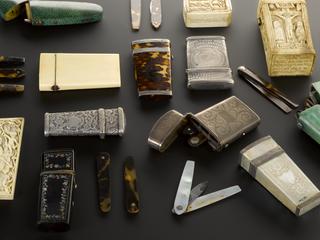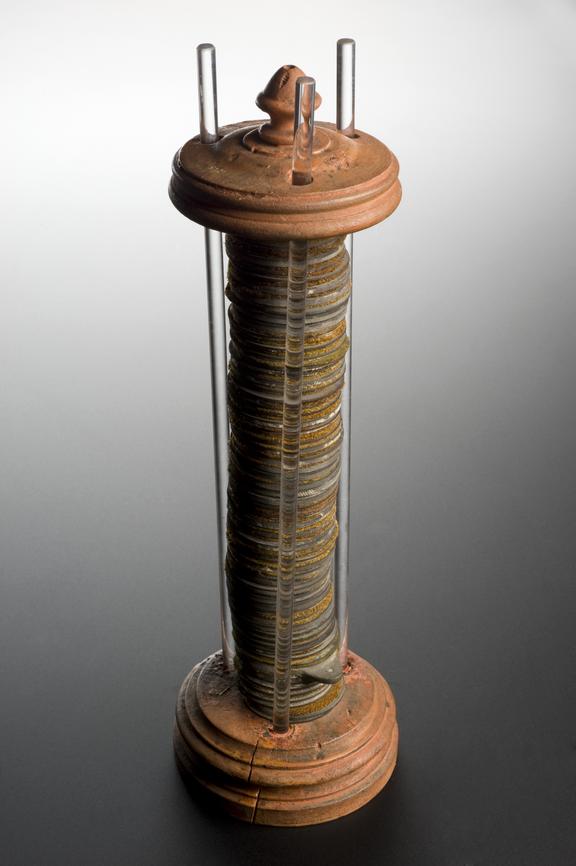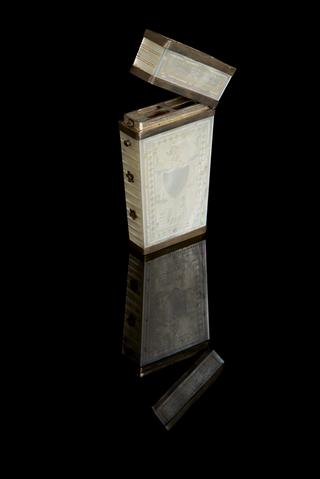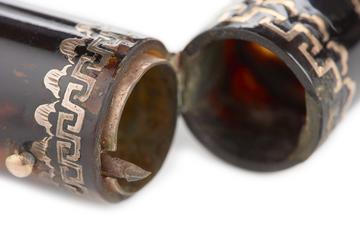

Galvani's voltaic pile, unsigned, Italy, 1800-1820
First described in 1800 by Alessandro Volta (1745-1827), a voltaic pile consists of a series of zinc and cooper discs separated by conducting cards. The pile produces continuous electric current and was used for experiments.
This voltaic pile was exhibited at the Volta Centenary Exhibition in Volta’s birthplace, Como, Italy, in 1899. A fire on 8 July 1899 destroyed a large number of objects. This is one of those that were salvaged.
Details
- Category:
- Therapeutics
- Collection:
- Sir Henry Wellcome's Museum Collection
- Object Number:
- A600015
- Materials:
- complete, copper (alloy), zinc (metal), felt, mahogany (wood), wood (unidentified) and glass
- Measurements:
-
overall (height x diameter): 343 mm 102 mm, 2.052 kg
- type:
- voltaic pile
- credit:
- Galvani



